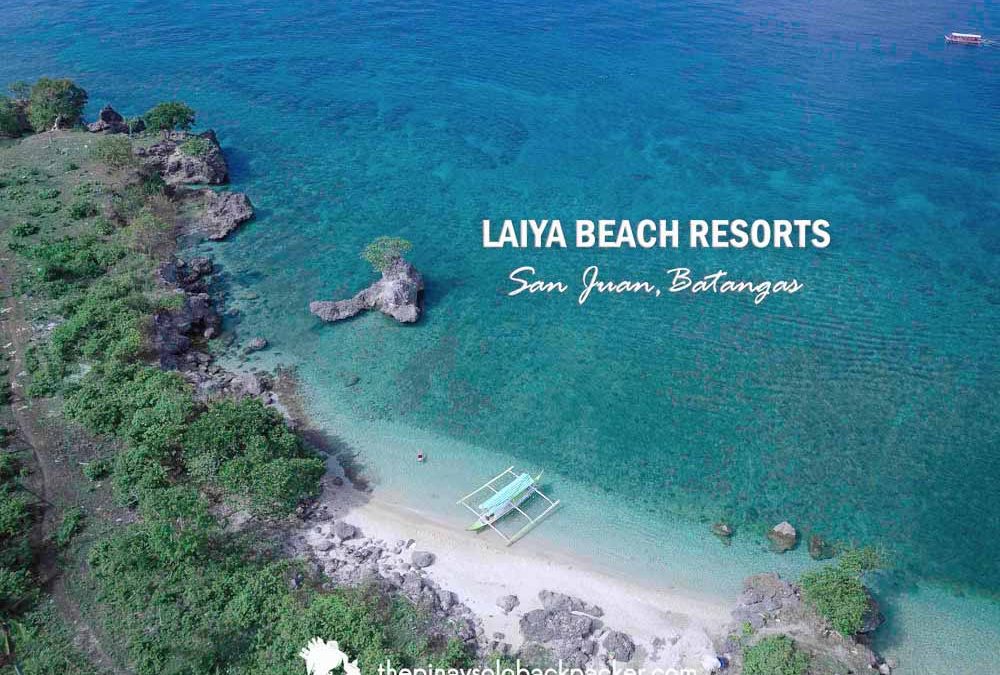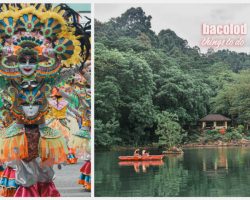What if you die during your travel? Does your soul continue to travel? Or do you commune with your creator? Is there life after death? Or maybe everything completely transforms into black and death just means your life has ended. Period.
Boring eh?

Death has always been shrouded by mystery. It’s a universal truth that we all have to face, sooner or later. Death no matter how noble brings misery and pain. That’s why the fear of dying is inherent in most of us. We fear the unknown. We fear “The End”.
This October the Pinoy Travel Bloggers brings you the “Tales from the Dark Side of Travel”. Find out the stories behind our exploration of destinations in the Philippines that can be attributed to Dark Tourism and macabre tales that some of us experienced along the road.
Kara Santos of Traveling Up‘s wrote Travel Tips for a Zombie Outbreak, an entertaining read just in case you end up in a City of Zombies! No, I won’t spill the secrets here but do head to her page to find out how.
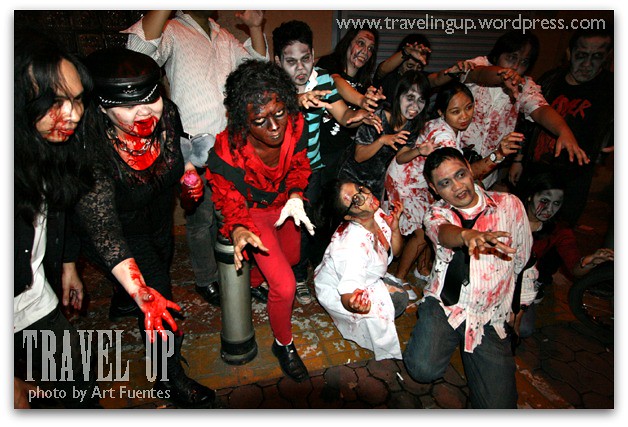
Zombie photo from Kara Santos of Traveling Up
Macabre Tales
Baguio is a famous hill resort in the Philippines best known for its cold climate, pine trees, strawberries, ukay-ukay, Panagbenga, bohemian culture, talented artists and artsy cafes and museums. But behind all this beauty and exoticism, is its painful past that caused the hill city to be known for its paranormal events. It earned the moniker of the “Ghost Capital of the Philippines” due to a lot of Baguio ghost stories circulating online and by word of mouth. Many locals believed that it’s because of the tragedy that shook the Philippines in 1990 where the epicenter of the 7 magnitude earthquake is Baguio so a lot of buildings and hotels have collapsed and many people were trapped and died. Others say, it’s also because some of the houses, lodges and villas are empty and only used during the summer or Christmas season that’s why many ghosts reside here. Good thing that during those days when I used to visit Baguio a lot, I didn’t know any of these stories so even if I’m alone in a supposedly dormitory room with 8 beds, I never really felt anything weird or unusual in Baguio unlike my good friend Pliff Damon of Flipnomad. Check out his Baguio ghost story “Scariest and Weirdest trip Ever” as he narrates:
“ I don’t know if I believe in ghost or any other supernatural beings. I have experienced a lot of “weird stuff” in my own home and in some places that I travelled to and I always try to find the logic behind those “scary moments” that I encounter although sometimes there really is no explanation.”
– Pliff Damon-

These ghost stories can be traced to as far as the Japanese colonization of the Philippines during the World War II where the ghosts of both Japanese soldiers and Filipina comfort women (women forced into sexual slavery by the Japanese military during World War II) are said to haunt the city. One famous haunted hotel is Dominican Hotel in Baguio City. Izah Morales of Tripadora recounts that this building with a spooky atmosphere is originally a vacation house of the Dominican priests. It was built in 1913 and was finished in 1915 during the World War II. Check out her Dominican Hotel ghost hunting story as she joins some of Baguio’s spirit questers on her spine-chilling story backed up by a spooky video on Hunting, Hunted and Haunted.
“The fog and the glimpse of light covered the City of Pines. The breeze of the morning was refreshing. We were reminded that darkness doesn’t remain forever…”
-Izah Morales-
What I Talk About When I Talk About Cemeteries
If you’re not tough enough to hunt ghosts then here’s one weird and interesting destination for you nestled in the City of Pines. Mica Rodriguez of Senyorita shares her leisurely walk at Camp John Hay Cemetery of Negativism.
“This symbolic cemetery was founded by Major John Hightower. It aims to encourage all its visitors to bury the banes of productivity in clever epitaphs.”
-Mica Rodriguez-
The Cemetery of Negativism mostly have images of animals displayed with the tombs, which may left some visitors wondering if there’s any real cemetery in the Philippines for the animals when they die? Such is the case when John Marx of Marxtermind who wrote Do Dogs Go to Heaven? discovered the cemetery of K-9 Dogs in Pampanga. ” The K-9 cemetery was established by Americans before they left the US Air Base. Now, it was being eyed as a full-fledged cemetery for pet dogs,” he continued.
“Cemetery may seem to be dark because of grief and death. But a place like this for our k-9 dogs is something that we can pay off for their heroine. They laid their lives for our safety, our people and our country.”
-John Marx-
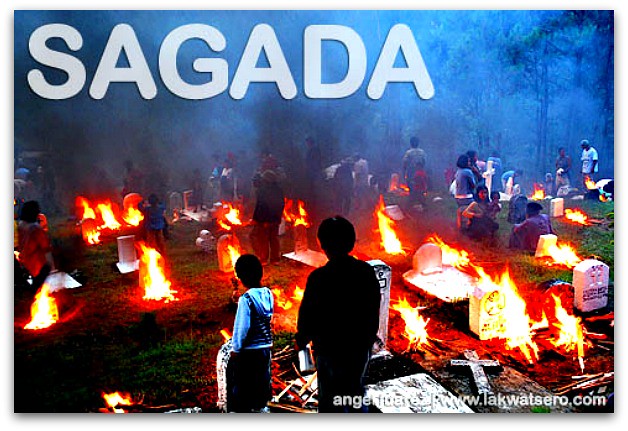
Panag-apoy photo by Angel Juarez of Lakwatsero.com
A cemetery is defined as a place where the dead are buried but in a moving tale of Flames and Mirrors at the Mission Compound Cemetery in Sagada, Mountain Province discover how Yoshke Dimen of The Poor Traveler redefines the meaning of cemetery and discover how the Sagadians remember the departed during All Souls Days and keep the flames burning in festival called Panag-apoy. Imagine how pillars of smoke kissing the fog looming overhead as crowds gather in a place that is usually very quiet in ordinary days, imagine what all these mirrors like Yoshke hath.
“… the opposite of life isn’t death. The opposite of life is the inability to leave a mark, to touch another life. The cemetery is home to not just dead bodies six feet under, but to memories. It is not death that makes people flock to graveyards. It is not death that makes us light candles — or bonfires — and keep their flames burning. It is these memories that make us do all that… “
-Yoshke Dimen-
It’s true that one of the things that make us flock to graveyards is the memories of the people that touched our lives, ever wondered what the most flocked graveyards in the Philippines? It must be the tombs of the famous and notable people. On his recent trip, Ivan Cultura of Batang Lakwatsero features the tombs of the late Presidents of the Philippines in his article Where Presidents Rest in Peace.
“Question started to play on my mind, where do the other past presidents rest in peace? how grand are the graves of our past leaders? do I still know them? And so my quest of searching for these graves has started.”
-Ivan Cultura-

Diosdado Macapal's tomb (photo by Ivan Cultura of Batang Lakwatsero)
Filipinos place a large importance on All Souls Day, it’s the time of the year when most people who grew up in the province but moved to the city to work flock to the bus stations to go home to the province to pay respect to the relatives that they’ve lost. Aleah Phils of Solitary Wanderer shares a nostalgic post about Traditional All Souls Day Practices in Tandag, Surigao del Sur.
“I look forward to going home in the provinces during the holidays. Nobody in our town is buying into the commercialized Halloween (yet), and on All Saints Day (November 1), whole families would troop to the cemeteries to pray for their dead, with the tombs already cleaned a few days before. They would bring candles and rosaries, while some would bring food, either for themselves or to leave on the graves of their loved ones.”
-Aleah Phils-
Cemeteries have always been attributed to paranormal events, like how Josiah Sicad of Lakas ng Trip recounts a Creepy Bangka Experienced beside the Verde Island Cemetery.
“I’m not the type of person who’s afraid of cemeteries, not until we left town. We were about 20 meters to our journey when the motor of our bangka suddenly became silent. “
-Josiah Sicad-
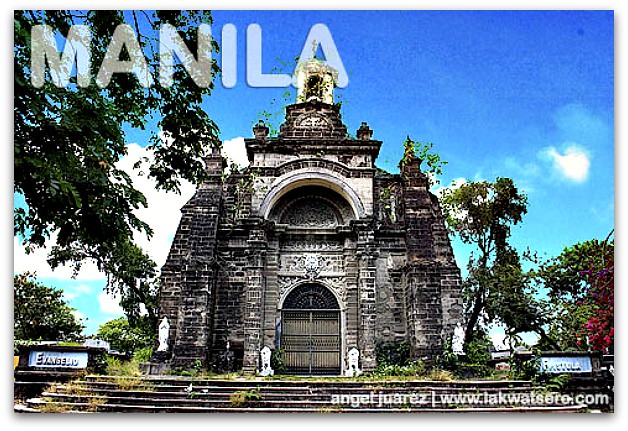
La Loma cemetery photo by Angel Juarez of Lakwatsero.com
While most people visit cemeteries to commemorate the death of their loved-ones, and some are scared of its creepy atmosphere, other tourists and photographers visit it for its architectural wonders and historical importance. Angel Juarez of Lakwatsero unveils two iconic cemeteries that are tucked in the bustling city of Manila – The Old Chapel of St. Pancratius and La Loma Cemetery. In his post Campo Santo de La Loma and it’s Lumang Simbahan, Angel elaborated the style and interiors of these architectural wonders.
“Its architecture can be considered as a pseudo-baroque with its elaborate facade characterized by detailed carvings of various figures and ornaments. The walls are made of stone blocks, its roof has a big dome and a cross, and the sides are supported by buttresses with windows in between. “
– Angel Juarez-
In his impressive post of 10 Old Cemeteries You Shouldn’t Miss, travel photographer Estan Cabigas of Simbahan showcased the beautiful old cemetery chapels in the Philippines particularly those found outside Manila.
“The old cemetery chapels located in the camposanto built during the Spanish colonial era is one of the interesting religious heritage structures in the country. Unfortunately many don’t have the focus they deserve. Only a few remains that still exist in the Philippines and their deterioration continue this day.”
-Estan Cabigas-
Pinoy Adventurista also gives us a glimpse on the well-known cemeteries turned into major tourist attractions that he has visited in the Philippines from Manila to Mindanao in his post My Fascination with Cemeteries.
“I visit cemeteries because of its rich historical value, notable architures and vibrant past. These cemeteries had been part of our rich culture and heritage, thus, paying a visit brings me back to the past.
-Pinoy Adventurista-
Still for others, they need not go that far to visit the cemetery because it is just in their neighborhood. Such is the childhood experience of AJ Poliquit, in his nostalgic post Cemetery Corner, he narrates how the gaping gate of the public cemetery (Familia Luzuriaga Cemetery) would greet him everyday in their hometown in Bacolod. But what’s remarkable about this cemetery is that it’s “the only cemetery at the intersection of two highways” as stated in the Guinness Book of World Records. The private cemetery of the Luzuriaga family occupies the center island of Lopez Jaena Street, perpendicular to Burgos Street.
“My first parade was a funeral procession, my first live band music a dirge. My neighbors across the street were stacked in cement boxes painted white, guarded by frozen angels and adorned with melted candle wax and wilted flowers.”
-AJ Poliquit-
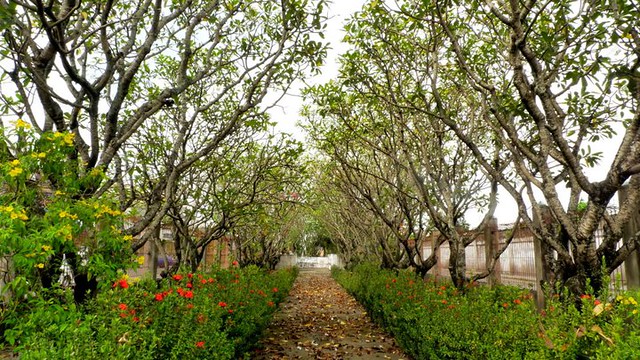
photo by AJ Poliquit
Aside from cemeteries there are other equally interesting destinations that can be attributed to Dark tourism. As defined by Dr. Philip Stone, Dark Tourism is the act of travel and visitation to sites, attractions and exhibitions which have real or recreated death, suffering or the seemingly macabre as a main theme. Here’s other interesting sites covered by fellow Pinoy Travel Bloggers:
Disaster Tourism
My 1st trip this year is an adventure trip with my friends Chyng and Dong Ho of Eskapo where we sailed through a submerged village. In his post Lake Mapanuepe he recounts our trip to the eerie lake in the sleepy village of Aglao in San Marcelino, Zambales which was formed by the eruption of Mt. Pinatubo in 1991. A disaster that caused countless of lives and lost properties and has reshaped some of the most visited tourist destinations now in Zambales.
“It was a different experience to sail on a lake with a semi-clear vision of a submerged village. And never leave without setting foot in the sunken church. You’ll feel the creep and its mystery.”
-Dong Ho-
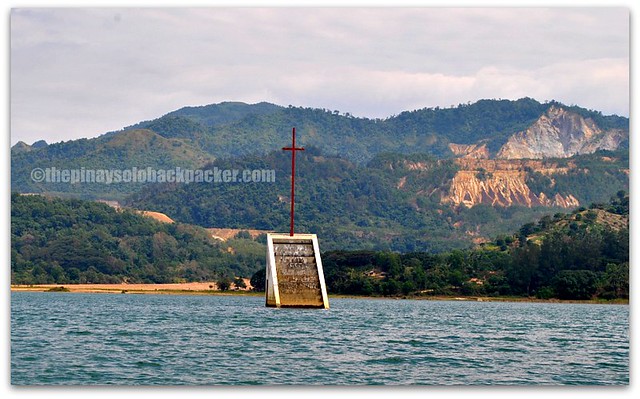
Lake Mapanuepe, Zambales
Another outcome of a spasmodic eruption of a volcano is the sunken cemetery of Camiguin. Kuya Bonzenti Panganiban of Con Tour Blog tells us the devastation caused by the mad Mount Vulcano in the 18th Century period. He shares that , the sunken land and the graveyard reached up to 20 feet was due to the molten lava that burst out from the said volcano in his entry The Resurrected Memories in the Sunken Cemetery.
“Every time I hear terrible stories of this kind, my imagination would tend to bring me back to their time, a feeling like I was there, hearing those people yelling for help which you cannot give to them since you felt also so helpless to save yourself…”
-Bonzenti Panganiban-
Disaster tourism can be categorized under dark tourism but it should be observed as disaster learning and not just out of curiosity. Another disaster that took place 20 years ago is the Ormoc landslide in 1991 brought about by a heavy flashflood that killed around 6,000 people. On his visit to Ormoc, Leyte, Edcel Suyo of Soloflighted joined his friends as they spent the hours strolling around, observing the holy week festivity. He recounted the experience with a hint of eeriness in a deep and poetic tale Ormoc, Leyte: Remembering the Tragedy 20 Year Ago which he matched with hunting photos.
“I listen as I walk in the dead of night. Sounds that unravel a mystery but ignorance plagues my mind. I hear silence that echoes thousands of cries. Cries that were never heard, of souls that remain unfound.”
-Edcel Suyo-
But perhaps the most well-known of all disasters that hit the Philippines is the eruption of the beautiful Mt. Mayon in Daraga, Albay known for its almost perfect cone.
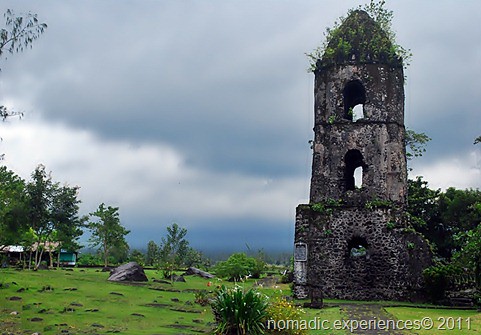
Cagsawa ruins photo by Marky Ramone Go
Marky Ramone Go of Nomadic Experiences writes in his article Haunting Tale of Cagsawa Ruins how he missed seeing the iconic volcano but was deeply moved by the story of the Cagsawa Ruins as recounted by a child guide.
” The mystery, the enigma and the history of Cagsawa brings a loud ovation to the senses. It is mythical in its own, it transgress from beyond. The scenic surrounding may be acknowledged as a romantic setting, however it lurks a dark and shadowy past, that proves that the Earth and its inhabitants has this love and hate relationship. ”
-Marky Ramone Go-
Exotic and Creepy Destinations
The Philippines has rich cultural heritage. Prior to the Spanish colonization, the indigenous Filipinos have been known to practice early funerary rites and practices reflective of our early unique culture and have spread stories of mysticism, Filipino legends and folktales across the country.
Apo Anno is a famous century-old mummy, which has been stolen, and rumored to have been bought by a benevolent rich man back to its resting place in sitio Nabalikong, Buguias,Benguet.
In an exotic tale of Eating Berries, Shooting Mummies during a trip to Timbak, Benguet, read the encounter of Ding of Explored with Apo Anno and how he was introduced to weaving of Burial cloth for the Kadangyan (rich people) in the town of Guinzadan.
“Admittedly, I was shivering. I didn’t know if it was the cold air or the act of photographing a mummy itself. Perhaps, both.”
-Ding Fuellos-
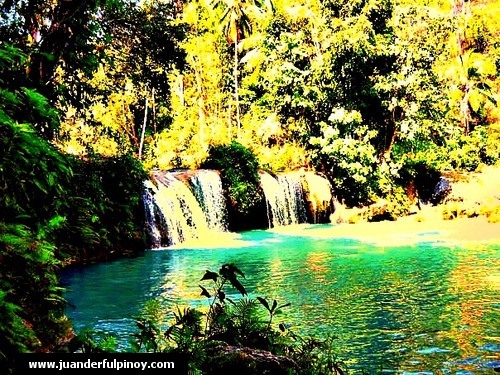
Siquijor Falls photo by Chin Chan of JuanderfulPinoy
Siquijor is a quaint town in Visayas that earned the moniker “The Island of Fire”. On his entry The Mystical Island of Siquijor, Chin Chan Lakwatsero of Juanderful Pinoy started his story by sharing the legend of Siquijor – a rustic island in the Philippines believed to have a number of healers, and witches. But as they explored the islands, he found a different kind of mystery – not black magic instead he was drawn to the natural charm of Siquijor and its people.
“Siquijor island is laid back island forgotten by time. Great place of white sand beaches, old ballet trees and virgin forests, real people and genuine paradise. A perfect place for a weekend holiday. A perfect island for a magic. Yes , in Siquijor magic does exist. ”
-Chin Chan Lakwatsero-
On the other hand, RV Escatron of Living in a Backpack is willing to go off-the-beaten path just to discover the mystical stories that shrouds Siquijor in his well-written account of the Black Virgin Saint of Siquijor. On an adventure trip with his group, he narrates how his much awaited encounter with a lady that he has longed to see – Santa Rita de Cassia and how he met the mananambal (faith healer), a bolobolo practitioner with a mutya or black stone.
“…a saint carrying a skull and with a wound on her forehead. She reportedly walks around town at the stroke of midnight!”
-RV Escatron-
Another tale of a mysterious Saint – Saint Pio or Padre Pio can be found in a major tourist attraction in the Philippines – Baclayon Church in Bohol. In her deep and hunting article, Brenna Bustamante of Philippine Travelogue tells as a moving story of how Baclayon is considered to be a very special town, a chosen town for Padre Pio to which his face has only appeared since his death in here touching post The Mystery of Baclayon Church in Bohol.
“Some mysteries can never be uncovered and there are no possible answers to our questions. However, there are some mysteries, hidden in the darkness of death, but lighted by the rays of belief and religion, that makes a country like ours a gem to visit.”
-Brenna Bustamante-

Baclayon Church photo by Brenna Bustamante of Philippine Travelogue
James Betia of Journeying James presest a list of 5 must-visit places that makes death a main feature in his interesting post When Death becomes “The” Destination. From cemeteries to hanging coffins in Sagada to the Kabayan mummies to Opdas cave – a cave that has been the resting place for about 200 skulls and bones and to the iconic (replica of the) Manunggul Jar.
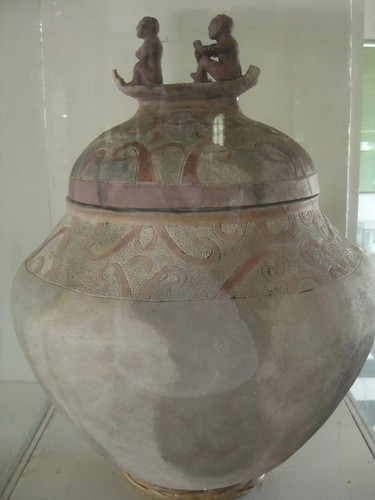
Manunggul Jar Replica photo by James Betia
The young mountaineer Kaiz Belga of Miss Backpacker tells us their experience at the dreaded Mountain Cristobal in Dolores, Quezon in her post The Evil that is Cristobal Did she encounter paranormal events? That is for you to find out.
“The so called mystical and holy mountain Banahaw lies just beside Cristobal, hence the conclusion that Cristobal possesses negative energies thrown away by its neighboring mountains. It is popular among mountaineers as the evil mountain.”
-Kaiz Belga-
War Memorials
The Philippines has suffered a lot from the wounds and a bruise of it’s tragic past brought about by foreign invasion. That’s why the sight of war memorials that were constructed to commemorate the victims of war is no surprise.
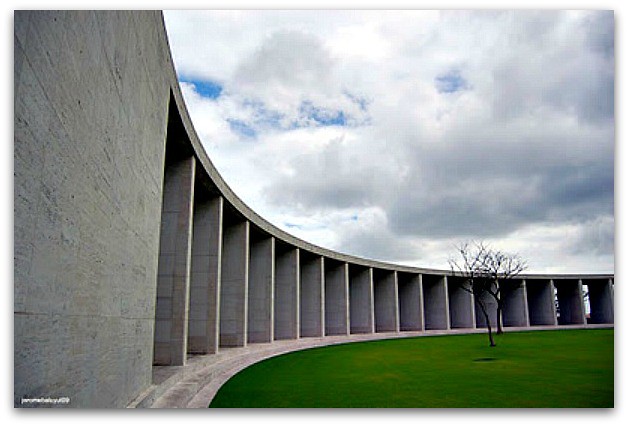
Manila American War Memorial (photo by Jerome Baluyot of Balintataw.org)
One beautifully designed war memorial is The Manila American War Memorial located in The Fort, Taguig City in Manila which Atty. Mhe-Anne Ojeda of My Comings and Goings mentioned as one of the twenty-three military cemeteries on foreign soil being maintained by the American Battle Monuments Commission of the United States government in her post Manila American Cemetery and Memorial.
Jerome Baluyot of Balintataw also added on his post “A Piece of America” that with a total of 17,206 graves, 3,744 of which are unknown burials while 570 out of the total number of graves are Filipinos. It is considered as the largest cemetery in the Pacific for U.S. personnel killed during the 2nd World War.
Aside from its historical importance, what draws both tourists and photographers to this cemetery is its stylish architecture and design.
“Reading a few things about the place helped this group of friends to stop goofing around and actually realize the importance of this place — remembering the soldiers and the things they sacrifice. Some of them became emotional; others are just happy and thankful for the freedom they are experiencing.”
-Jerome Baluyot-
Another remarkable war memorial in the Philippines is the Plaza Cuartel in Palawan which kuya Edelito Sangco of Island Vacations visited. In his article My Plaza Cuartel Visit in Palawan Island, Philippines, he recounts a detailed story of how the most vivid story of a survivor of the Palawan Massacre – Don Schloat sent shivers down his spine.
“I left the war memorial harboring a bitter feeling of war atrocities…”
-Edelito Sangco-
When we talk about war it conjures images of guns, coastal artillery, warships, ammunition magazines, and the likes. A great reminder of the images of war and a well-preserved destination is Corregidor Island. Karen Valdez of Tips and Travels shows us the top sites we can explore in this craggy island that is shaped like a tadpole on her entry Tadpole Shaped Fortress.
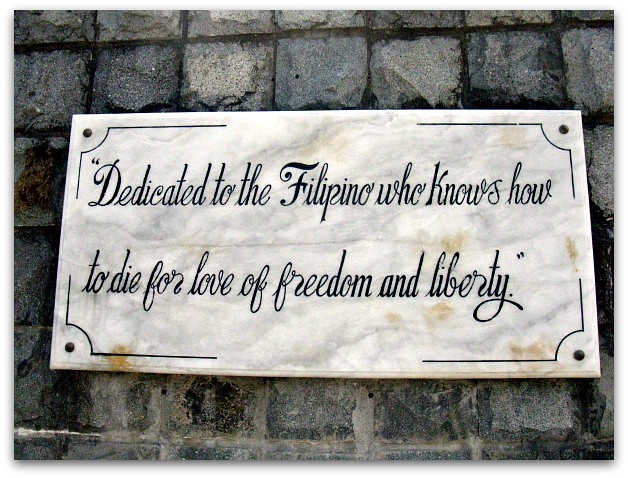
Corregidor Island photo by Karen Valdez
Meanwhile Eileen Campos of Possibly Pinay narrates how Taking the Malinta Sub lateral Tunnels Tour brings out the darker history of Corregidor. Armed with a hard hat and flashlight, she dove into the dark pit that lay behind the Tunnel’s Lights and Show Exhibit.
“I’m not to be a fan of highlighting very dark aspects of a tour, but this time, I believe it is a great way to learn history. ..”
-Eileen Campos-
Religion and culture plays a vital role in understanding and accepting death and bringing comfort to those people who have lost their loved ones or those who are facing death themselves. But the mystery of death is so profound that, despite the religious doctrine, mythology, scientific research, and the many theories and explanations that exist on the subject, it still remains the great unknown to date. Even a leisurely walk in a cemetery would give you a glimpse to how diverse these beliefs on death are.
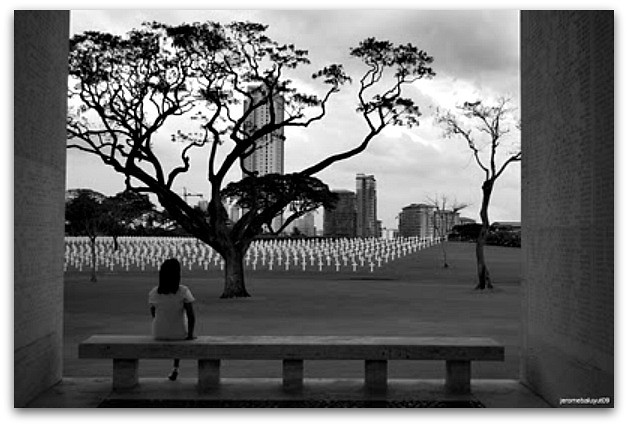
Manila American War Memorial (photo by Jerome Baluyot of Balintataw.org)
But no matter how complex death is, the commemoration of the departed, the visitation to such sites of architectural and historical importance and disaster learning should never be forgotten because the wounds of our history should never go out of memory.
This October The Pinay Solo Backpacker is the host for the Pinoy Travel Blogger’s Carnival entitled ” Tales from the Dark Side of Travel”. For more topics click on the carnival photo.

*********************************************************************

